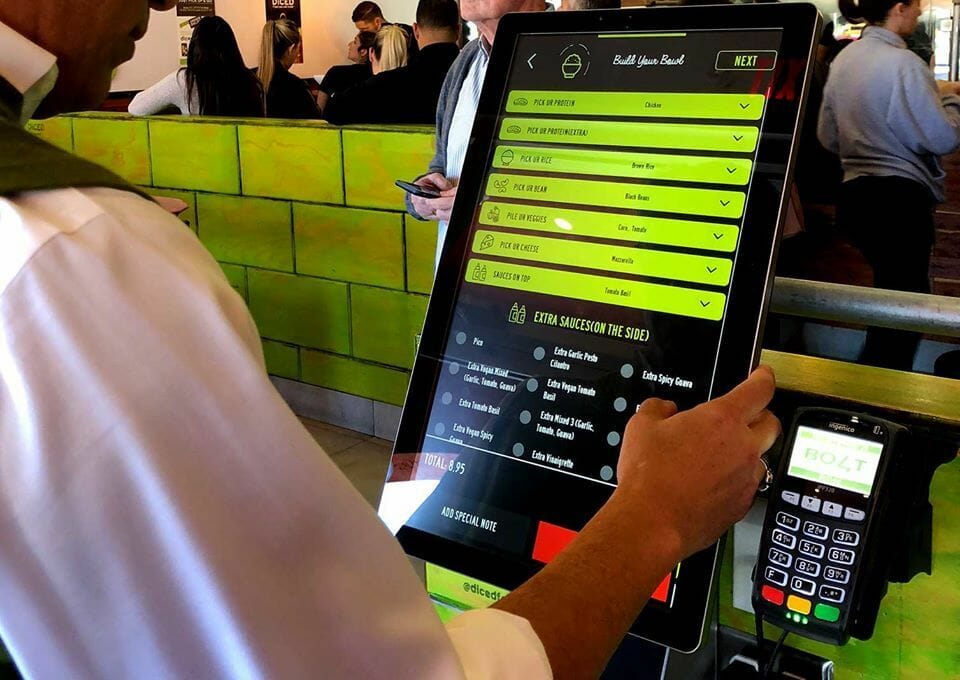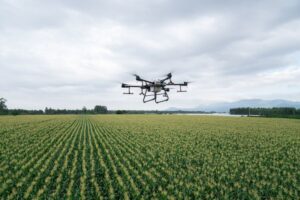It’s hard to think of a transaction that can’t be completed digitally today. As with online banking and shopping, the digital revolution has made its way into food retail, offering consumers convenient ways to patronize grocers, restaurants, farms and big brands. Indeed, most consumers now expect it and prefer dining in restaurants with at least some tech-driven features.
Investors are buying in as well: venture capital investment in technologies like shelf-stacking robots, 3D food printers, point-of-sales systems, and food waste monitoring IoT grew to $1.9 billion in last year, according to AgFunder’s 2019 Agri-Food Tech Investing Report.
Now, the coronavirus pandemic is elevating restaurant tech, as countless independents and chains close their doors and resort to off-premise-only dining. (Most major quick-service restaurants already generate the bulk of sales from drive-thrus and off-premise sales.)
But behind the flashy app screens, AI-powered drive-thru menus and self-order kiosks, the restaurant industry is undergoing deep growing pain amid the digital transformation.
“Enterprise restaurants are decades behind, and the restaurant space, in particular, has been slower than other sectors to adopt technology. They know this,” Ohad Jehassi, CEO of restaurant tech startup Tray (an AgFunder portfolio company) told AFN.
Tray offers enterprise-class point-of-sale software for self-service kiosks, which can be coupled with kitchen display systems to help the back of house to manage orders and handheld devices to facilitate order taking and payment throughout a restaurant. It also supports online ordering, inventory management, and integration with third-party delivery services like Uber Eats.
For many enterprise restaurants, moving to a tech-based system like Tray is a “sensitive change” for a business, says Jehassi. They are often saddled with large capital outlays and have to run decisions about adopting technology up a complex organizational chain of command. Those operating under a franchise model are may be even less enthusiastic about the upfront expense of adopting new technology.
“They say I have all this old stuff that I paid a lot of money for and this new tech requires me to rip it out and throw it away. That’s hard for them,” Jehassi explains.
Tray tries to emphasizes the advantages for businesses’ operations and bottom line. “All of the merchant’s data runs through their system, and it’s really important data that they need to run marketing, accounting, and other functions,” adds Jehassi.
Where possible, Tray tries to retrofit its software into existing infrastructure.
Small and nimble
On the other end of the spectrum, mom and pop restaurants with one or fewer locations are outpacing the larger players when it comes to adopting new innovations and meeting consumers’ digital demands. Small restaurants’ relative readiness to embrace technology and digital trends has kicked larger brands into gear, particularly when it comes to in-app ordering capabilities, loyalty programs and customized user notifications.
But even for smaller restaurants, new tech adoption isn’t always smooth or consistent.
“It’s creating more cost and operational headaches,” observes Jehassi. He cites third-party delivery platforms as an example. “A restaurant will add a machine for UberEats, one for Grubhub, another for DoorDash, and another for its loyalty program. And if you walk into most restaurants you see a lot of machines not talking to each other.”
There are also pain points around managing a consistent menu across ordering channels. Instead of simply managing orders at a register or drive-thru, brands now also have to field orders from apps, websites, and third-party delivery services.
Too much of a good thing?
Many new technologies tout streamlined ordering and reduced wait-times for customers as key selling points. Some may even do that too well.
Self-service kiosk and point-of-sale provider GRUBBRR was launched by founders wanting to give restaurants an integrated software-hardware option. Many companies offer kiosks but leave the buyers to find their own operating systems, which don’t always result in a streamlined solution, Bhavin Asher, CEO of GRUBBRR, explained to AFN. Some of GRUBBRR’s clients, like Panda Express, have actually struggled to keep up with inbound orders as a result of adopting the company’s technology.
“They said your tool is great—it has boosted sales 30% and the lines are going down quickly, but the kitchen can’t keep up,” Bhavin Asher, CEO of GRUBBRR, told AFN.
The company offers suggestions for improvement, like eliminating cashiers or moving them to the back of house to facilitate orders. It also provides food lockers to cut down customers’ time spent waiting in line for pickup.
“This way they don’t have to navigate whose food is coming out first, calling out names, providing orders to third-party delivery companies like DoorDash,” Asher adds.
The company is also advising on questions dealing with foodservice Feng Shui. Finding space for kiosks in crowded restaurant layouts can cramp in customer flow. Using technology designed to facilitate faster ordering may then seem less appealing if customers are left standing around awkwardly or are constantly in other customers’ way while they await orders.
“In response to changing consumer needs, there’s a slight over-saturation in the market across merchant-first apps and tools for ordering, delivery [and] rewards,” says Ellen Linardi, head of product at restaurant software and hardware provider Clover. “Legacy POS systems lack the flexibility and nimbleness to respond to new trends, and this causes the need for workarounds like counters full of delivery service tablets. An open technology platform can help eliminate this fragmentation of technology.”
Automation backlash
A common criticism of restaurant tech is that will potentially putting a large segment of the workforce out of jobs. In response, GRUBBR tries to reassure the restaurant industry that new technology have to result in job displacement; rather, human labor can be reallocated to parts of the business, like food preparation and management. Asher argues that the restaurant industry will ultimately need more laborers to handle the uptick in workflow that technology facilitates. He adds that customer service will remain a critical part of keeping customers happy and securing loyalty.
Tray’s Jehassi goes a step further: the ball is already rolling and late adopters aren’t likely to fare well.
“The US restaurant market is completely saturated. Every enterprise restaurant operator tells me that its all about share shift and that the only way to build business is to steal business,” Jehassi says. “If Taco Bell has a self-service kiosk that increased orders, then that’s orders they stole from me.”
The move to tech-enabled service isn’t always profitable, Jehassi acknowledges; many restaurants are losing money on third-party delivery. But he expects services like Tray and others to help that even out with increased customer traffic. “It results in order shift because it makes it easier to order.”




